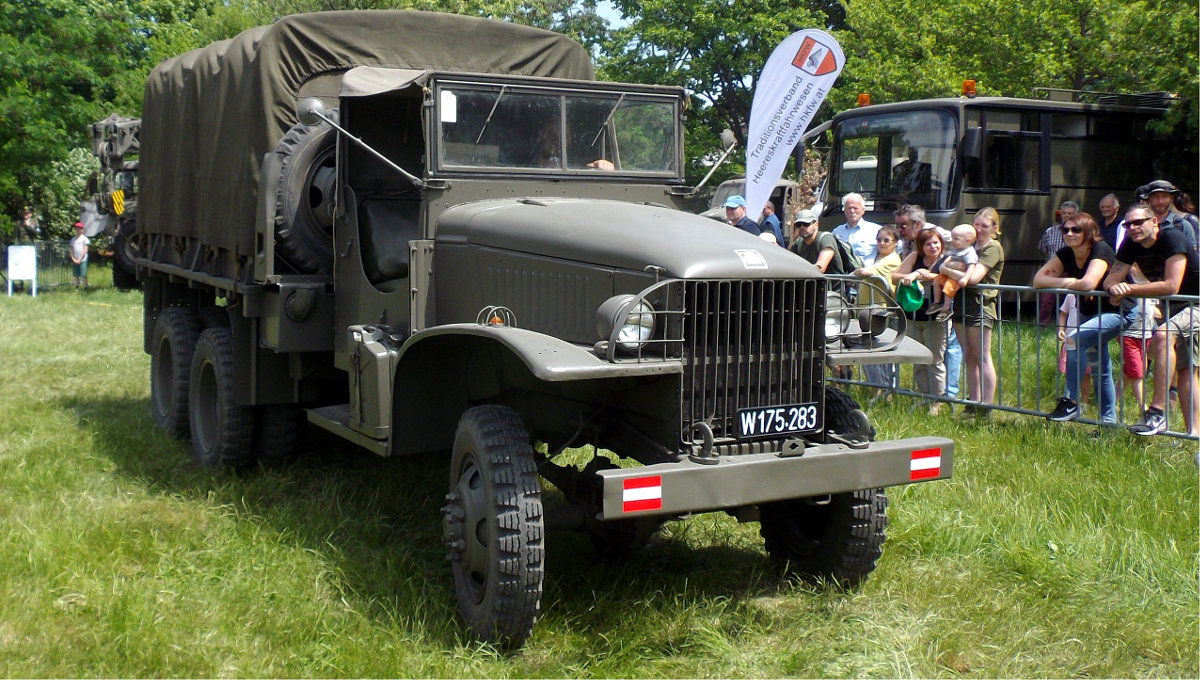The first weekend in June saw the already 11th big annual gathering of historic vehicles at the Military History Museum in Vienna, “On Wheels & Tracks”. Around ten thousand visitors used the perfect summer weather to see “what moved the Army” over the last hundred years.
The Traditionsverband this year complemented the museum’s special exhibition “To Protect and to Help – The Austrian Army Between 1955 and 1991” with vehicles as they could be seen during the Hungary (1956) and Czechoslovakia (1968) crises, as part of Austria’s United Nations contingent on the Golan Heights and during disaster relief operations.
Starting with the first major challenge for the then just newly re-established Austrian Army, a Willys Jeep and a GMC CCKW presented the status of military motorization at the time when Warsaw Pact forces intervened in Hungary in 1956. Austria was faced with the task to protect its borders but to also handle the influx of more than 100.000 Hungarian refugees, and the young Army still had to rely mostly on surplus vehicles left behind by the allied occupational forces that had left the country just a year before.
Twelve years later, the next major alert hit the Army – Warsaw Pact forces had intervened in Czechoslovakia in August 1968 to stop the so-called “Prague Spring”. By now equipped with vehicles from Austrian manufacturers, part of the Army was mobilized to the Czechoslovakian border. For the first time we presented a Jeep with the 10.6 cm recoilless rifle (“RPak”) as well as an 85 mm tank-killing gun (“PAK”), which was towed behind a Steyr Type 680 M3 truck and made ready to fire as part of the presentation. It should be noted that these guns had just shortly before been acquired from Czechoslovakia by the Austrian Army and would now potentially be used against Warsaw Pact forces. The third vehicle presented as part of the 1968 border-protection alert was again a Czech-produced Praga V3S truck with mounted 12 cm rocket launcher.
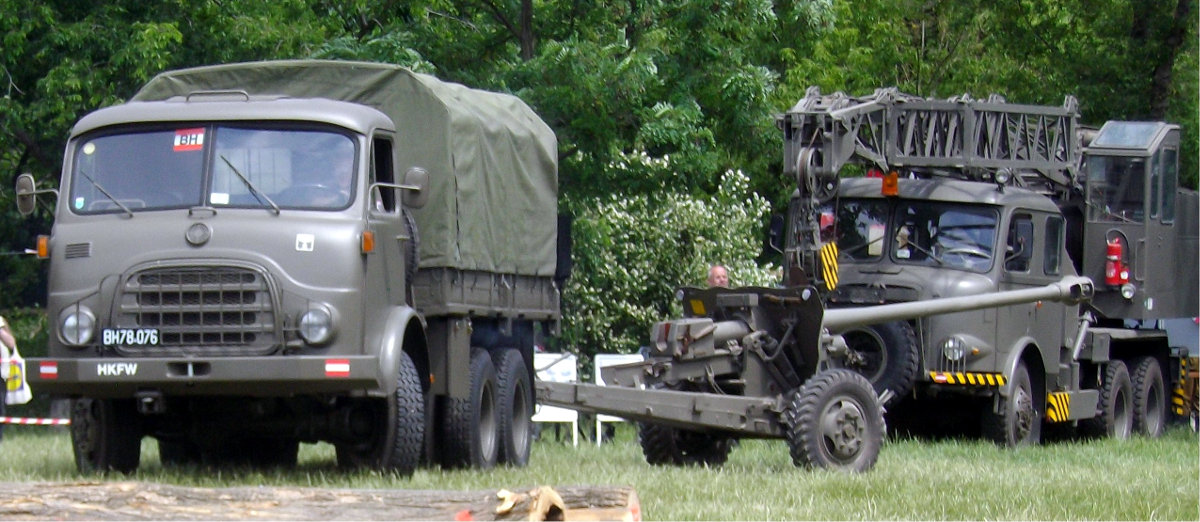
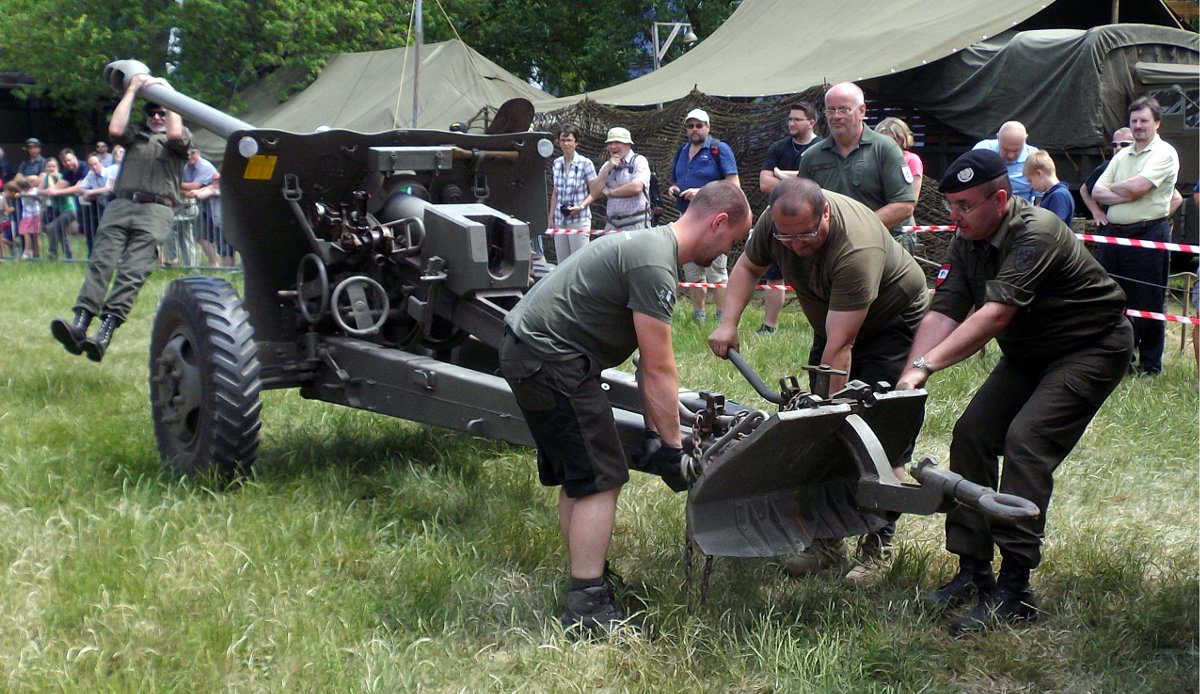
Starting in 1973, Austria participated in the United Nations’ peace-keeping mission on the Golan Heights. Our presentation showed two vehicles in UN-white painting, a Steyr Type 680 M3 and a Pinzgauer 712 K. Both vehicles also carried the original UN license plates as used by the Austrian contingent in the UN mission.
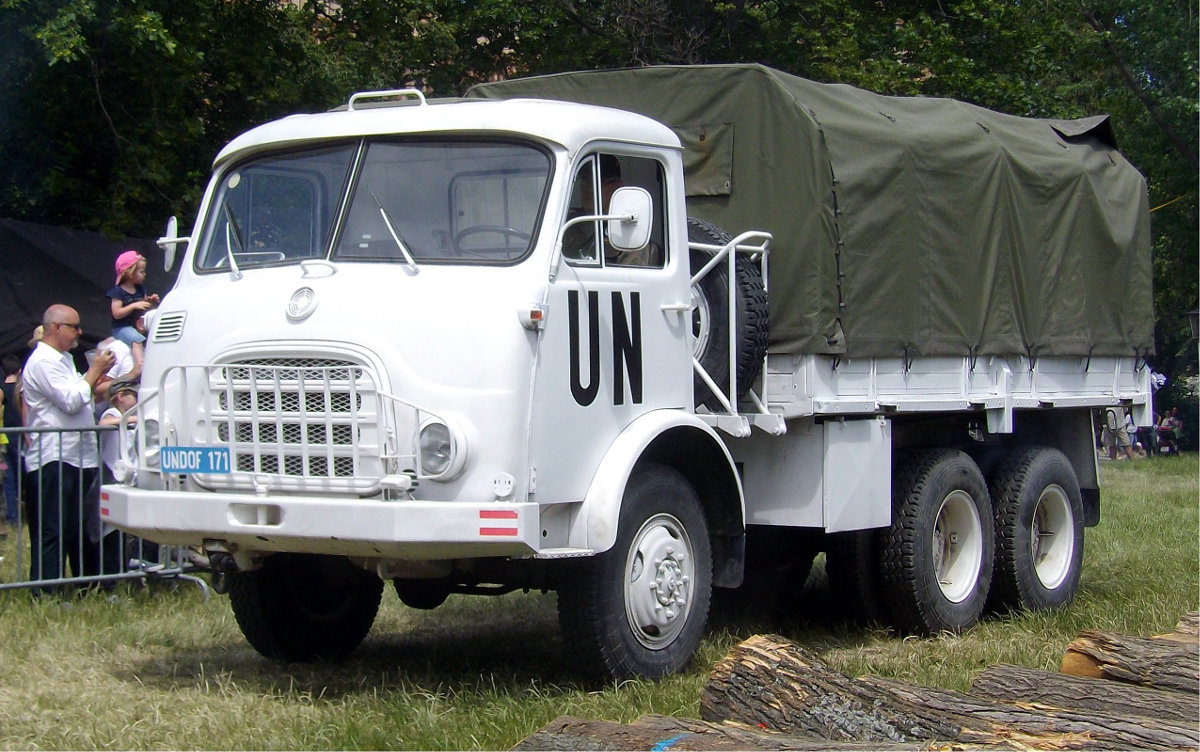
At the end of our presentation we addressed the numerous disaster relief operations that the Austrian Army (and especially its engineer units) undertook over the last 50 years, mainly flood and avalanche rescue. A special event had occurred on August 1 1976 when one of the major bridges across the Danube in Vienna (the “Reichsbrücke”) collapsed on a Sunday morning. The Gräf & Stift Engineer Crane represented the support that the Army provided in clearing the debris from the stream, then also aided by two M88 heavy recovery vehicles. The VOEST-ALPINE TROSS 130 loader represented the Army’s numerous support operations during major flooding or avalanche recovery operations.
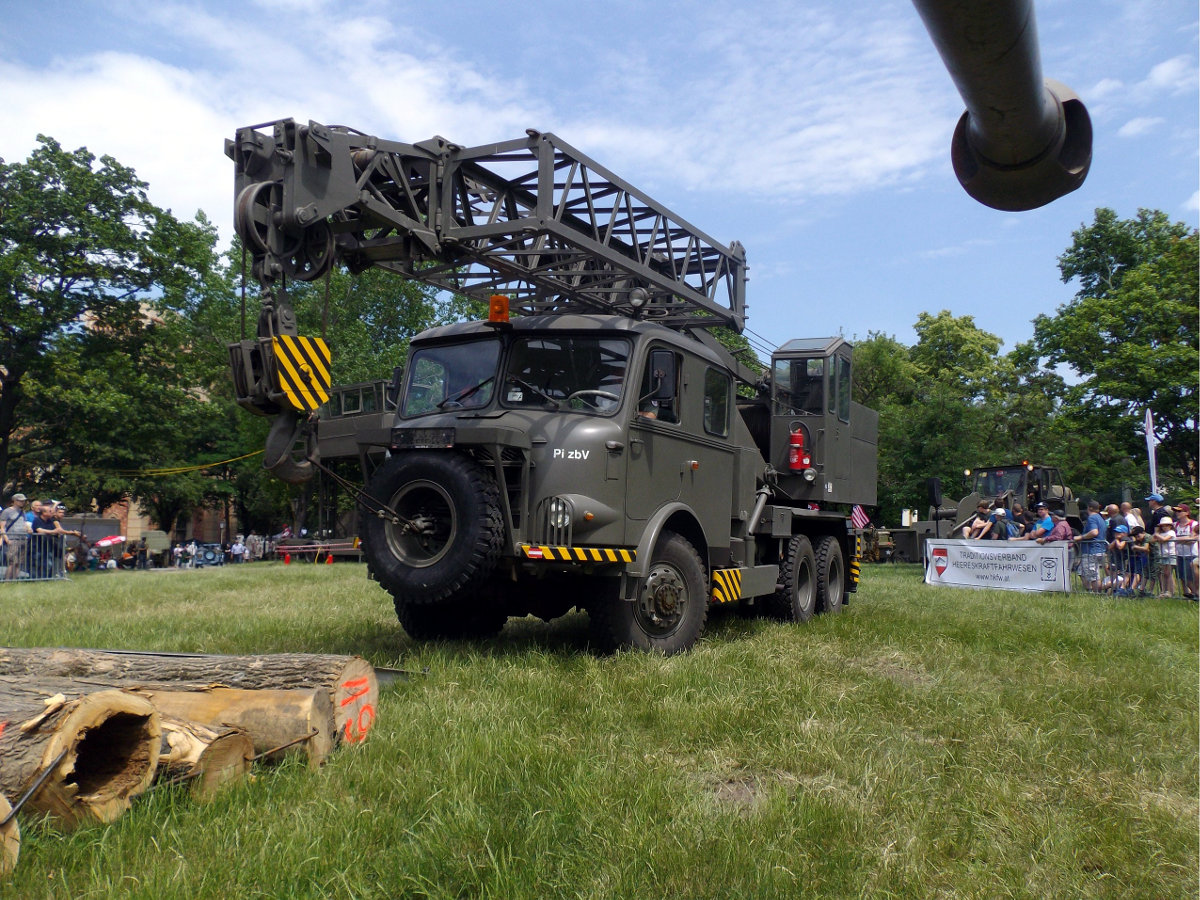
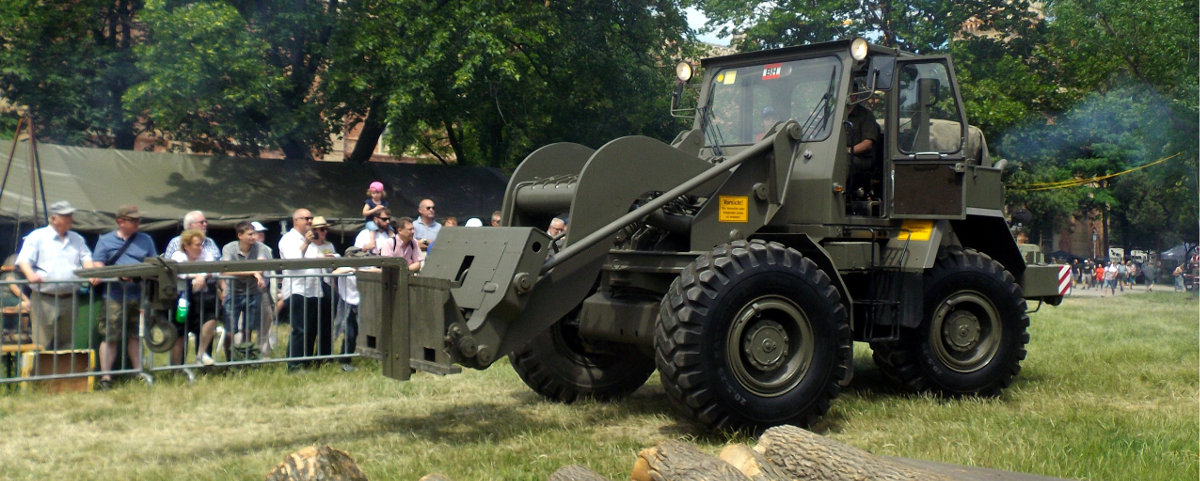
We highly recommend visiting the Museum’s special exhibition, still on display until October 28 2018 in a tent behind the Museum: (https://www.hgm.at/nc/museum/veranstaltungskalender/detail/show/Event////schutz-hilfe-das-oesterreichische-bundesheer-1955-1991.html).



